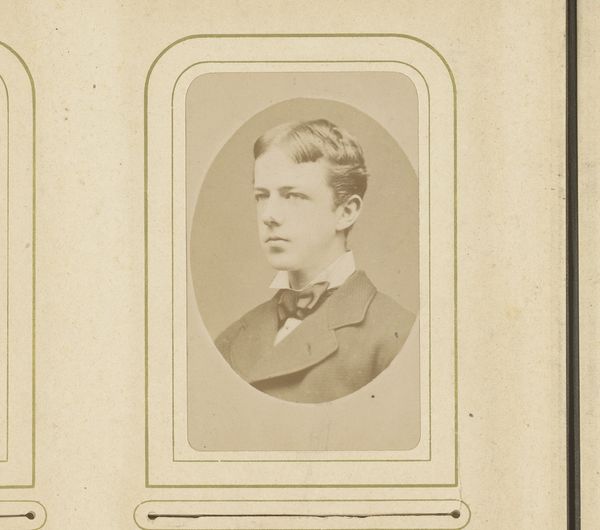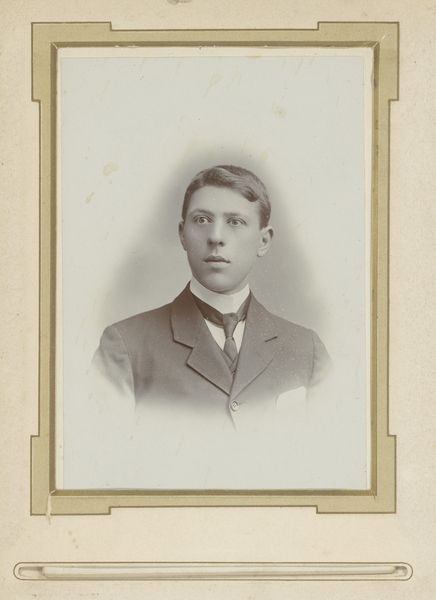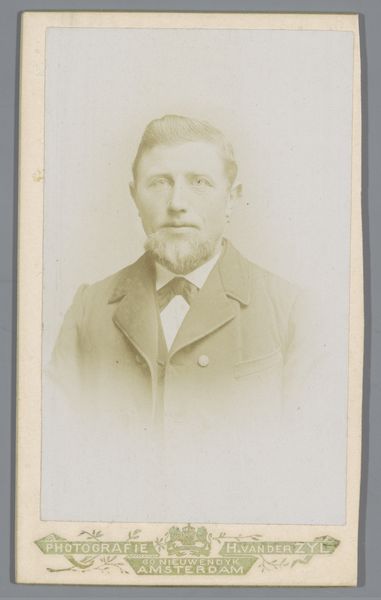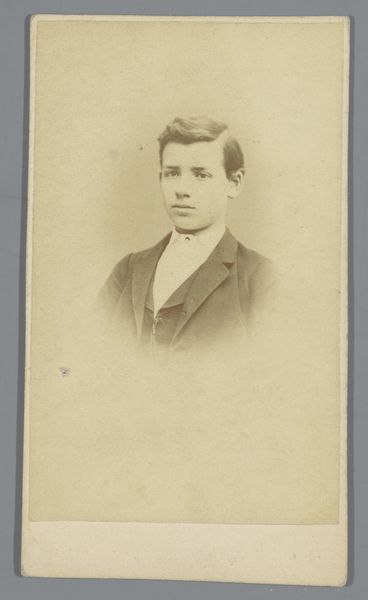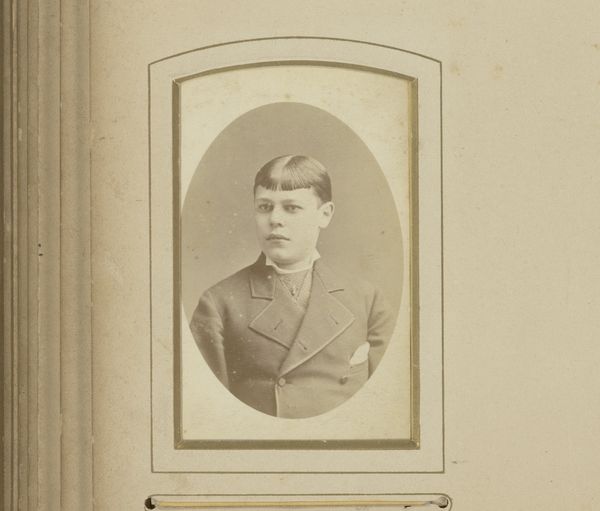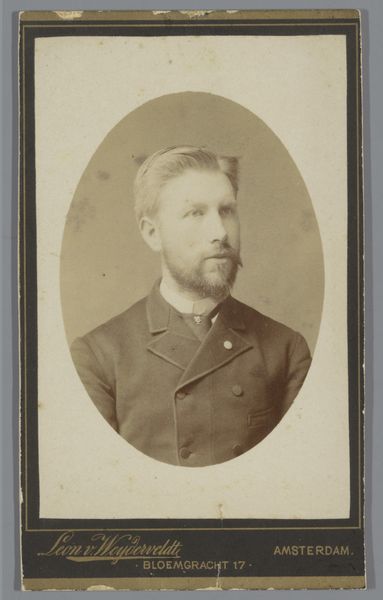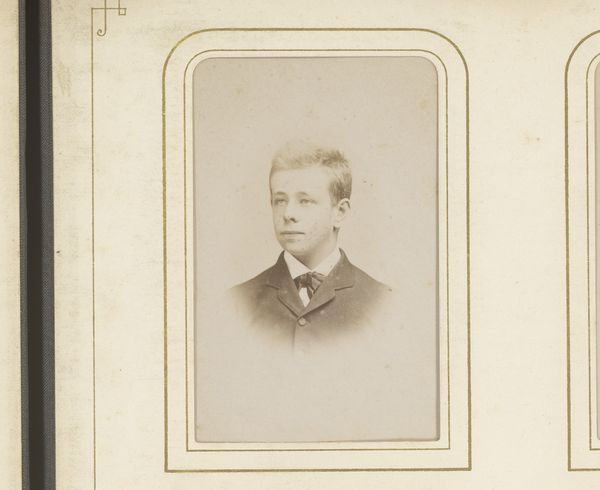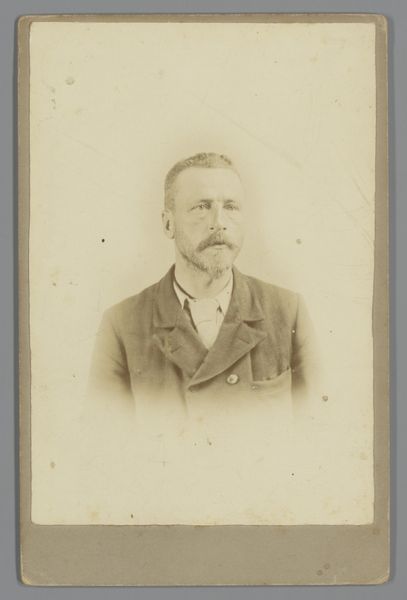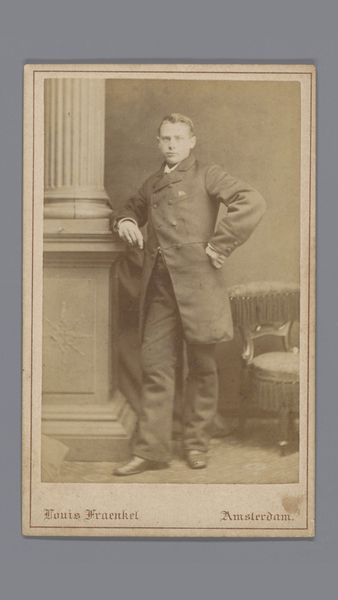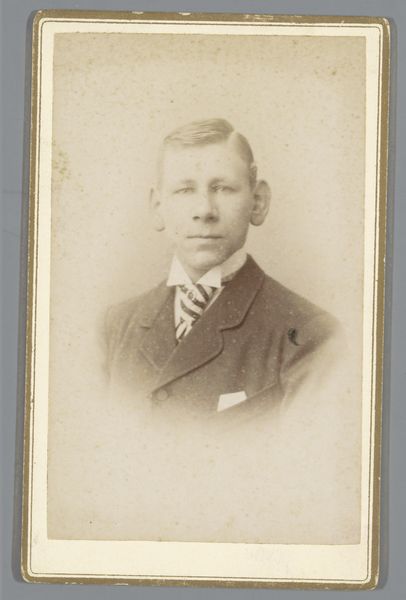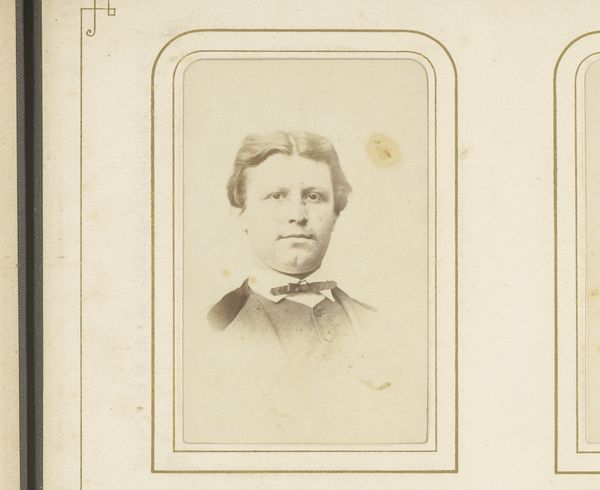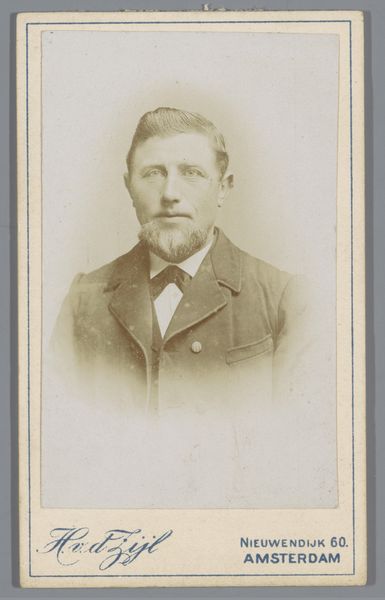
photography
#
photography
#
historical photography
Dimensions: height 83 mm, width 51 mm
Copyright: Rijks Museum: Open Domain
Editor: We’re looking at "Portret van een man met baard," or Portrait of a Man with a Beard, a photographic work by Daniel Nyblin, created sometime between 1860 and 1900. It strikes me as such a formal, almost staged image. What historical context informs how we should view a portrait like this? Curator: Well, considering the period, the mid-to-late 19th century, photography was rapidly democratizing portraiture. Think about who had access to portraiture before then: primarily the wealthy elite. Suddenly, the middle class, and even working classes, could commission these kinds of images. How do you think that changed its function as a visual document? Editor: I imagine it became much more widespread, reflecting a broader segment of society and becoming an important document for their personal and professional use. It must have been essential for upward mobility? Curator: Precisely. Studio portraiture offered an important avenue for presenting oneself to the world, aligning with emerging ideas of self-fashioning. The stiff posture, the careful attire – they signal an attempt to claim a certain social status, perhaps even aspiration to join new elites created during industrial expansion. Look at the context of this image being part of a collection of portraits. Does it change our perspective? Editor: I suppose that means someone at this time chose it for some personal or perhaps professional record-keeping, as an important snapshot of their time. So it is less art for the sake of art, and more documentation of life at the time. I hadn't thought of that! Curator: Indeed. Photography offered the power to fix social identities and embed those images in a variety of institutional archives and memories. We learn less about individual intentions here, and more about broader institutional approaches to creating new norms. Editor: So understanding historical forces— the social context of photography in the 19th century—really unlocks the image's deeper meaning, rather than just focusing on what's in the frame. Thanks!
Comments
No comments
Be the first to comment and join the conversation on the ultimate creative platform.
